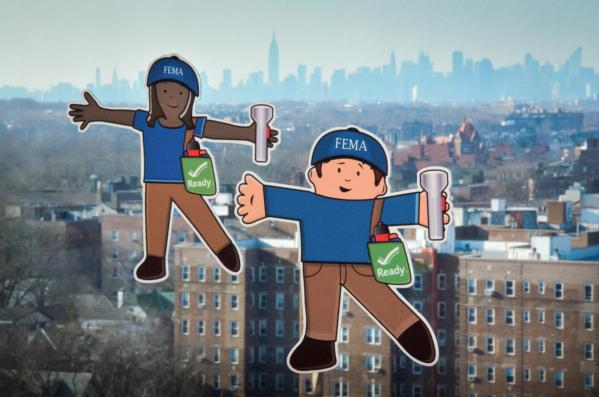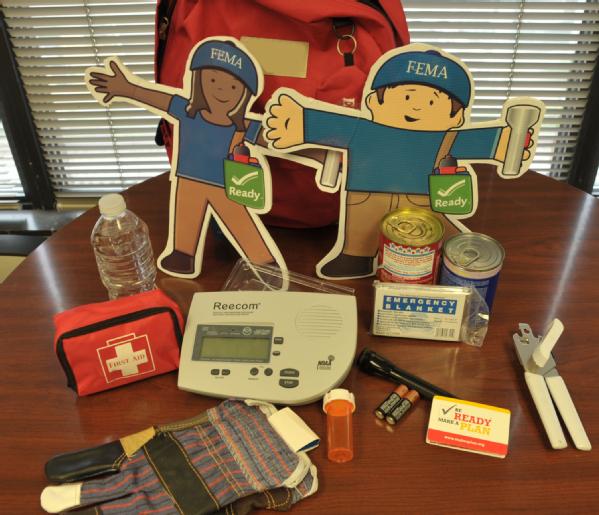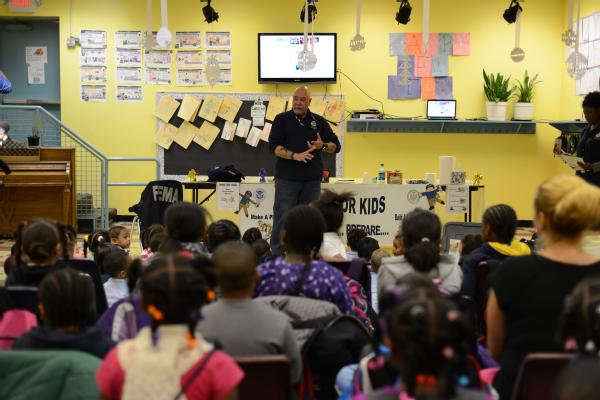
Queens, N.Y., Jan. 4, 2013 -- Flat Stella and Flat Stanley visit the FEMA Joint Field Office (JFO) in Queens, NY to attend meetings with FEMA Federal Coordinating Officer Michael Byrne, FEMA partners and associates.
Stella and I went to the FEMA Field Office in New York City.
We met the man in charge, a former firefighter who was quite busy.
He and his staff said, “be prepared and stay smart.”
They all reminded us “everyone must do their part.”
When disasters hit, the whole community stays aware.
In other words, there are a lot of people who care.

Queens, N.Y., Jan. 4, 2013 -- Flat Stella and Flat Stanley visit the FEMA Joint Field Office (JFO) in Queens, NY to attend meetings with FEMA Federal Coordinating Officer Michael Byrne, FEMA partners and associates.
The next stop was the Disaster Recovery Center.
Where people affected by the storm can enter.
They get information on how to rebuild homes.
And can talk face-to-face about money and loans.
People can talk about something called Mitigation.
Which means building a safer and stronger nation.

New York, N.Y., Dec. 15, 2012 -- Flat Stanley and Flat Stella visit a FEMA Disaster Recovery Center (DRC) specialist who is discussing mitigation best practices with Hurricane Sandy survivors.
We also went to a school in Far Rockaway, Queens.
Where teachers make preparedness part of their routines.
We learned that the next time a storm is coming.
We should not wait, we must get going.
We learned not to panic, but it’s important to prepare
With a kit that holds supplies packed with care.

Other things we have to face:
Disasters can happen any time, any place.
And floods just don’t happen at the ocean;
Water can rise with much rain and quick motion.
So make sure you know a safe place to go,
A place high and dry, where the water won’t flow.
Practice beforehand till you know the route.
Like you do with fire drills so it all works out.

Bronx, N.Y., Jan. 11, 2013 -- Students in the Bronx, New York, take part in learning about natural disasters and preparedness during a FEMA For Kids presentation at MARC Academy and Family Center. FEMA plays a vital role supporting State, Tribal and local governments as they respond to the impacts of Hurricane Sandy.
Don’t drive through standing water, please tell mom and dad
Find another way around and you will be glad
Always be safe, always be sure
Turn around, don’t drown, find the next detour.
We were glad to learn these things in order to be ready
For the next disaster that may come our way
We’ll have the best chance of being okay.


Add new comment